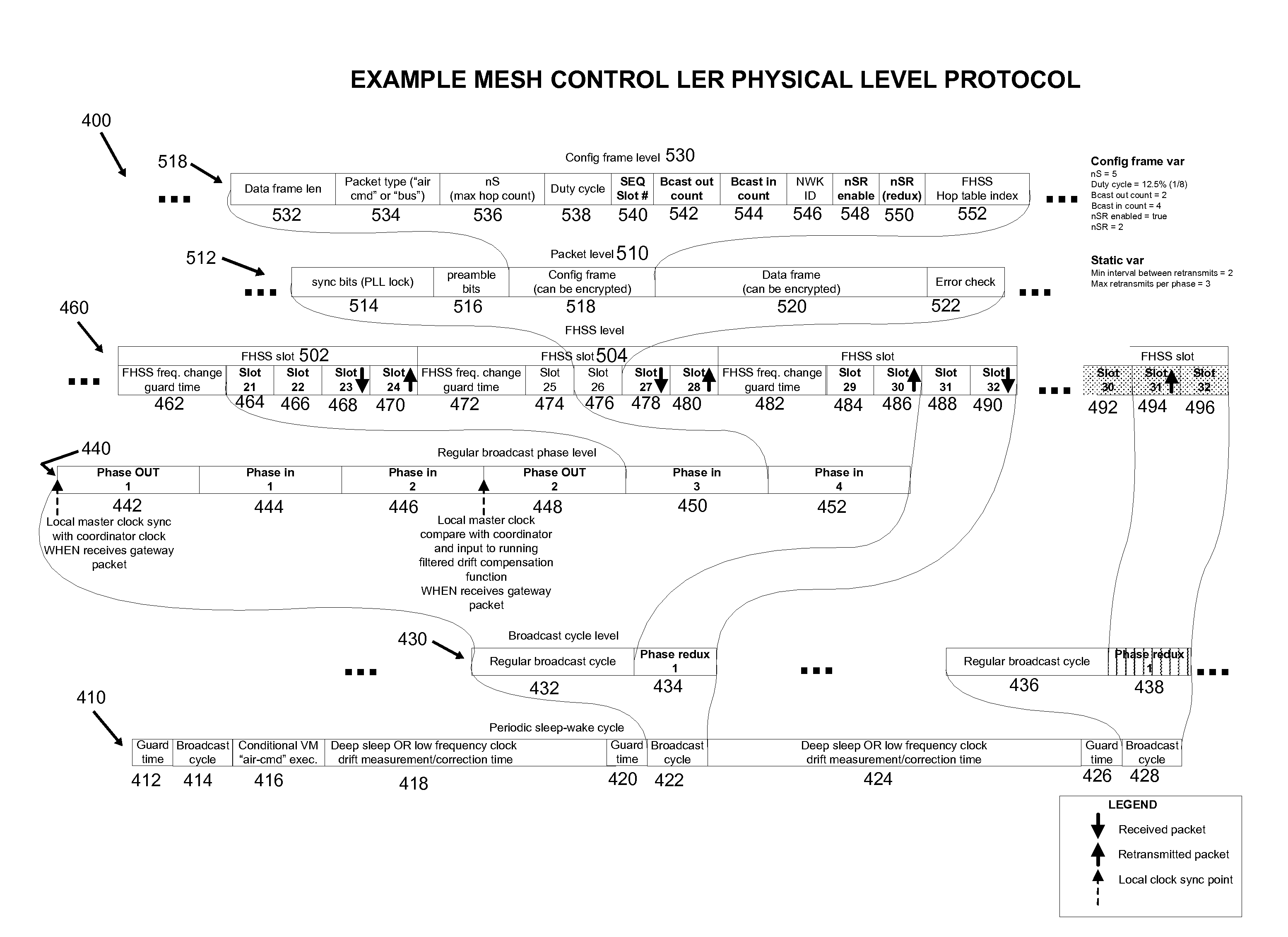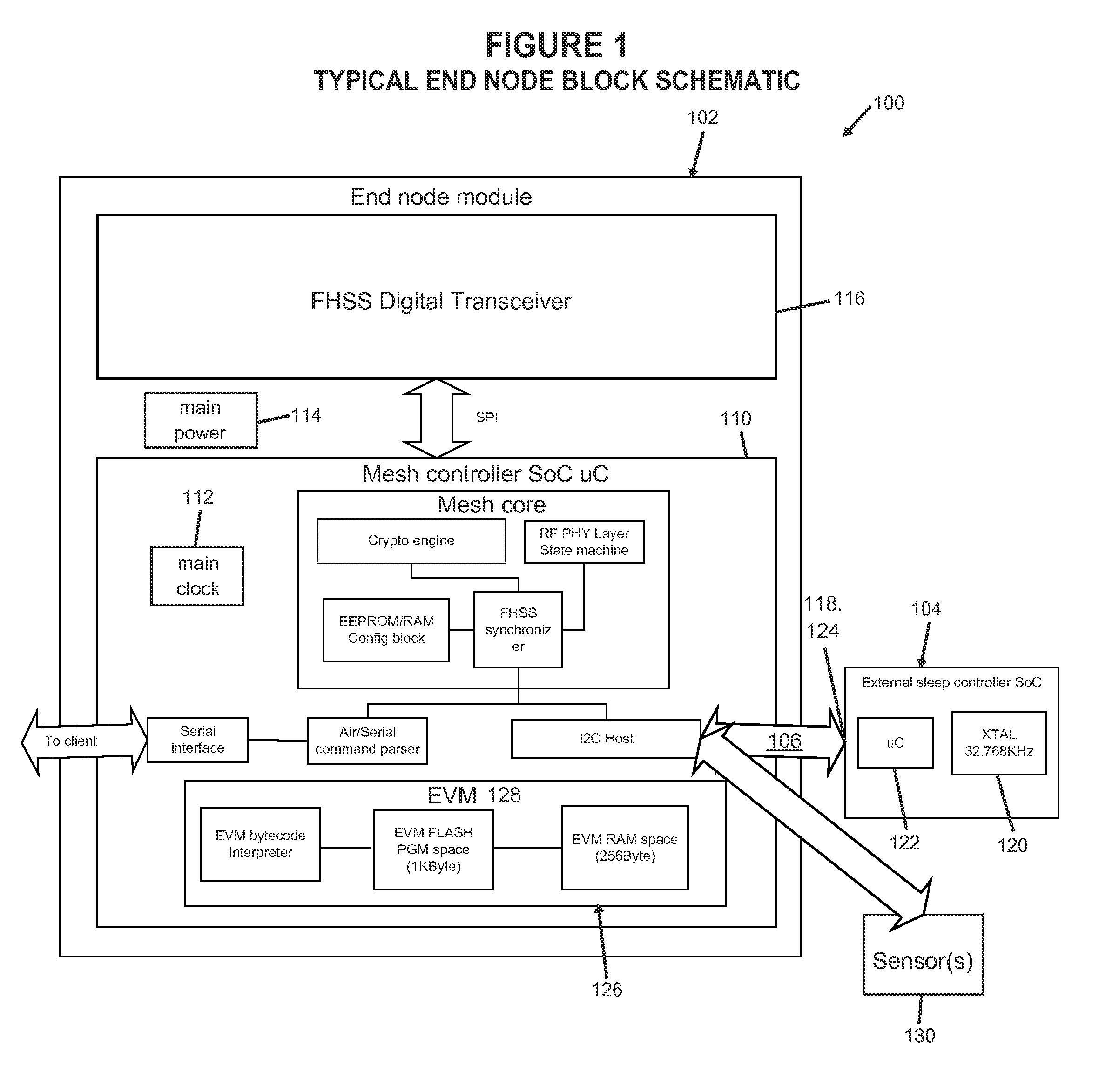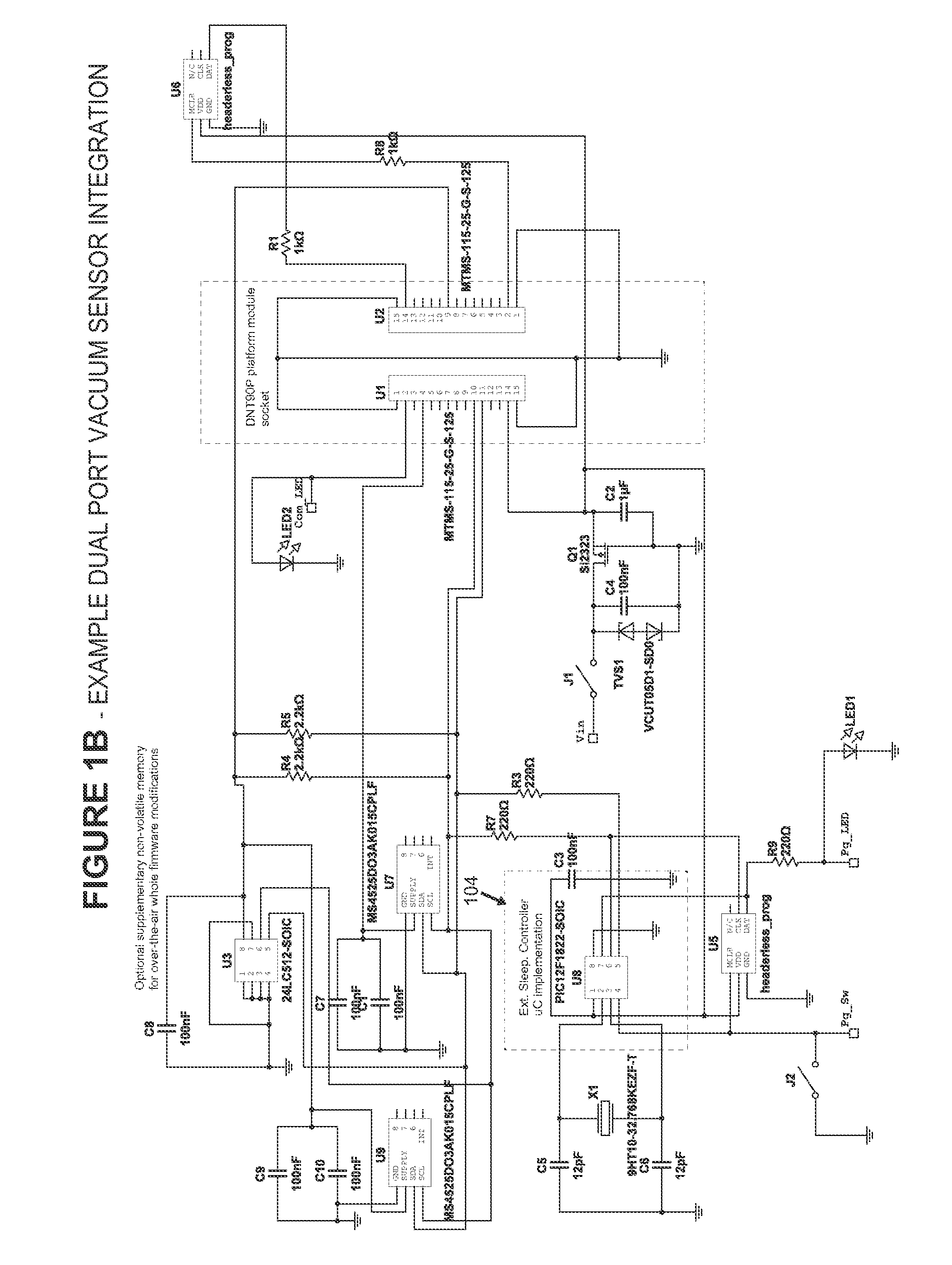Mesh Network System and Techniques
- Summary
- Abstract
- Description
- Claims
- Application Information
AI Technical Summary
Benefits of technology
Problems solved by technology
Method used
Image
Examples
Embodiment Construction
[0076]Broadly, in accordance with an embodiment, there is provided a novel application of a bit-synchronized mesh network leveraging the lower theoretical time bound of a mesh network packet broadcast which is not limited by conventional contention effects due to antenna diversity phenomena, as well as leveraging the capture effect inherent of FM radio distributed networks as a fallback transmission method in the case of heavy multi-path, delay-induced and physical occlusion-caused interferences, in order to not only enable a standard master-slave round-robin sensor polling scheme as seen in most distributed sensor networks, but also to enable multiple bandwidth-asymmetric clients that can replicate the data received by said master at no supplementary network bandwidth or speed cost, and thus allows more leeway as for the choice in the optimal power source for each node in terms of cost and maintenance requirements. In addition, standard flooding scheme is hybridized with a slow-flo...
PUM
 Login to View More
Login to View More Abstract
Description
Claims
Application Information
 Login to View More
Login to View More - R&D
- Intellectual Property
- Life Sciences
- Materials
- Tech Scout
- Unparalleled Data Quality
- Higher Quality Content
- 60% Fewer Hallucinations
Browse by: Latest US Patents, China's latest patents, Technical Efficacy Thesaurus, Application Domain, Technology Topic, Popular Technical Reports.
© 2025 PatSnap. All rights reserved.Legal|Privacy policy|Modern Slavery Act Transparency Statement|Sitemap|About US| Contact US: help@patsnap.com



